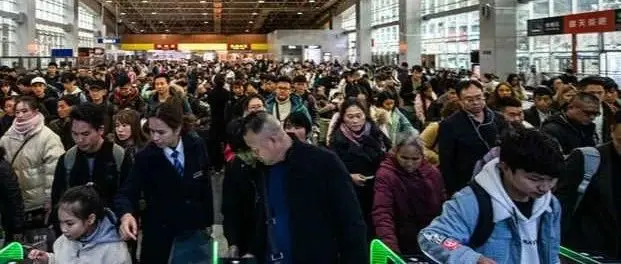The population of many large cities continues to grow
2025.02.24

Population data for various regions has been successively released. Currently, coastal developed cities and provincial capitals in the central and western regions continue to maintain their ability to attract population. Recent data from several central cities, including Shenzhen and Nanchang, shows that the resident population in these cities has maintained a continuous growth trend.
According to the information released by "Shenzhen Release," the permanent population of Shenzhen at the end of the year was [number] million, an increase of [number] million compared to the previous year, representing a growth rate of [percentage]%. For two consecutive years, Shenzhen has led all cities in the province in terms of both the increase and growth rate of its permanent population. In terms of the increase, the permanent population of Shenzhen at the end of the year rose by [number] million, which is [number] million more than the increase of [number] million in the previous year. In terms of the growth rate, the permanent population of Shenzhen at the end of the year grew by [percentage]% year-on-year, an increase of [percentage] percentage points from the previous year's growth rate of [percentage]%.
In Nanchang, the capital of Jiangxi Province, data released by the local statistics bureau shows that at the end of the year, the city's permanent population was . million, an increase of . million from the end of the previous year. In terms of urban and rural composition, the urban permanent population of Nanchang was . million at the end of the year, an increase of . million from the end of the previous year; the rural permanent population was . million, a decrease of . million; the proportion of the urban population to the total population (urbanization rate) was .%, an increase of . percentage points from the end of the previous year.
In Shijiazhuang, the capital of Hebei Province, local media reported that the city saw a net inflow of [number] permanent residents in [year], marking the third consecutive year of positive growth. According to publicly available data, by the end of [year], the total permanent population of Shijiazhuang reached [number] million, an increase of [number] million from the end of [previous year]. By the end of [another year], the city's total permanent population had grown to [number] million, up by [number] million from the end of [previous year]. In recent years, Shijiazhuang has maintained a continuous upward trend in population growth.
According to the main population data of cities (prefectures) in Gansu Province at the end of the year released by the Gansu Provincial Bureau of Statistics, the permanent population of the provincial capital Lanzhou was . million at the end of the year. Public records show that Lanzhou's permanent population was . million at the end of the year, an increase of . million from the previous year. In the following years, it increased by . million, . million, and . million respectively, maintaining a continuous growth trend.
Niu Fengrui, director of the Small and Medium Cities Research Institute, analyzed that in the current process of population movement, rural populations continue to migrate to urban areas. In terms of the spatial distribution of the population across the country, on one hand, people are still concentrating in the developed cities along the eastern coast; on the other hand, within individual provinces, populations are gathering in central cities such as provincial capitals. Although the resident population in some provinces is decreasing, the population in their capital cities continues to grow steadily. Overall, whether viewed nationally or within individual provinces, the distribution of the population is continuously optimizing. Among them, during the processes of industrialization and urbanization in central and western provinces, populations from ordinary prefecture-level cities within these provinces are migrating out, with some moving to the southeastern coastal regions and a significant portion relocating to their respective provincial capitals.
Peng Peng, executive president of the Guangdong System Reform Research Association, analyzed that central cities have thriving industrial development, more job opportunities, higher overall income, and better resources in education and healthcare. With the relaxation of household registration restrictions, the population will continue to gather in these central cities. Peng noted that the overall appeal of developed eastern cities, especially those in the three major economic regions, is stronger, attracting more migrants. At the same time, some central cities in the central and western regions are also rising, further optimizing China's economic spatial layout. In recent years, central cities in the central and western regions have also attracted significant population inflows.
Niu Fengrui stated that technological innovation is the driving force for future development, with central and major cities serving as the hubs of such innovation. Technological advancements also influence the spatial structure of cities. Some advantaged regions have formed metropolitan areas where central cities and their surrounding areas are closely interconnected, establishing a rational division of labor. Furthermore, new and broader divisions of labor at higher levels emerge between different metropolitan areas.

